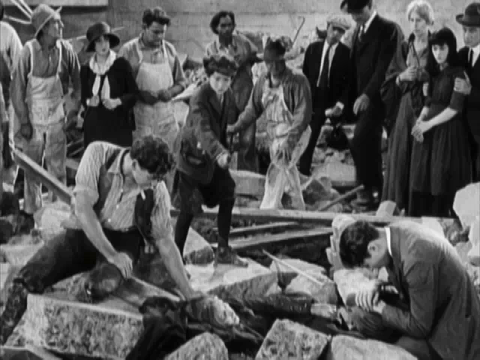In 1928, just before making his last silent films, Buster Keaton moved from United Artists to MGM, a move that in retrospect ruined his career. In a very short time, he went from making immortal silent classics like The General (1926) and Steamboat Bill, Jr. (1928) – films where he had total creative control – to acting in cheap comedies. In between, he got to do one single film for MGM in his own trademark style, The Cameraman.
Keaton plays a still photographer who wants to become a newsreel cameraman. He also falls in love with a secretary at MGM, so he spends the rest of the film trying to impress both her and his boss. Further complications involve an ill-tempered policeman, a gang-war in Chinatown and an organ-grinder’s monkey.
It is interesting to compare this film with Vertov’s Man with a Movie Camera (1929). Even though they are vastly different films, they give much information about what camerawork was like in the 1920s. Note, for example, how light the cameras were. With the coming of sound, cameras had to be made noiseless, so they became much heavier. The advanced camerawork of the 1920s was not to be seen again for many decades.
The Cameraman was co-directed by Edward Sedgwick, who went on to direct several Buster Keaton comedies. Since Keaton had by that time lost his creative control, quality varied wildly, but for instance Speak Easily (1932) is worth watching.
This film is best enjoyed for its high comic and romantic values. Perhaps to an even higher degree than other Keaton films, this one features some excellent acting. In some scenes, the acting is very low-key, very beautiful, and really more reminiscent of what would be typical in Hollywood ten or fifteen years later.
The Cameraman
Download link
Year: 1928
Running time: 1 h 15 min
Director: Edward Sedgwick, Buster Keaton
Stars: Buster Keaton
Image quality: Good
Resolution: High (960×720)
Soundtrack: Excellent
Sound quality: Excellent
Best file format: MPEG4 (1.1 G)







